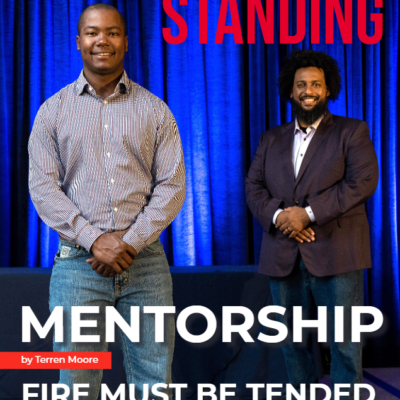If you keep up with marketing trends, then you have probably already noticed that the terms “content marketing” and “thought leadership” have become increasingly popular in the past couple of years. However, many people accept these concepts without actually understanding the differences between them. Content marketing has therefore become synonymous with thought leadership. It is understandable that there is confusion, as there is a good deal of overlap between the two. Both deal with sharing messages with your audience, but this does not make them the same. Knowing the concrete differences between content marketing and thought leadership, as well as how to apply them to your insurance agency’s marketing strategy, is crucial to your success.
Let’s start with the basics. What is thought leadership? Thought leaders are considered experts in their field and are therefore qualified to relay information regarding their area of expertise to others. Since they are so knowledgeable, they are often widely trusted sources and advisors. People feel as though they can come to thought leaders for guidance, or inspiring, innovative ideas, and even for a plan on how to make those ideas into a reality. However, thought leaders are not just respected because they are creative and adept. Others feel comfortable around them because thought leaders are genuine. They craft their ideas to better their business and help others, not because they’re trying to increase their follower base. Thought leaders also aren’t the people following a step by step guide on how to reach their customers, because they understand that formulas don’t apply to real people. Their concepts and reactions are authentically their own, and they aren’t overly concerned with perfection.
Now that we understand what thought leaders are, we can tackle content marketing. Content marketing is the broad term that describes creating and distributing content to a clearly-defined audience. Content marketers strategically push out content that is relevant and valuable to their audience. However, there are different types of content marketing that fall along that spectrum. Since thought leadership is about providing your followers with genuine, helpful, and creative ideas, it is considered a type of content marketing. It is regarded as the best and most effective category because it is personal and therefore closes gaps that some content marketers don’t even realize is there. Although it is the most legitimate, useful and effective type of content marketing, it is also sometimes the hardest the employ. When an audience is reached, the relationship between the individual and the thought leader is as strong as it can possibly be, because it is based on trust. However, it takes longer to reach and grow that audience because thought leaders are focused on really helping people rather than forcing out content that will expand their customer base. Since it is the hardest sort of content marketing to create and market, it is also often produced in lower volume.
On the other end of the content marketing spectrum is the idea that solely focusing on advertising is the best way to market. Advertising content is crafted using data that predicts what a target audience will respond to. It is a market-driven exercise that is primarily concerned with reaching the largest amount of people in the shortest amount of time. This strategy is definitely efficient, but not necessarily effective. Technically speaking, it is the opposite of thought leadership. Obviously, there are varying degrees of content marketing between these two extremes.
As an insurance agent, it is important that you achieve the positive extreme and become a successful thought leader. Clients will often feel more comfortable letting someone they trust protect what they’ve worked hard for. Your customers want to know that you have their best interests at heart. You also have an edge over captive insurance agents. You can provide a more personal experience for your customers in real life and in the marketing world. Take the time to reach out to them on social media and respond to their questions, comments, and interactions rather than pushing out content and expecting them to digest it. Marketing isn’t a one way street.
You also have all the qualifications to become a thought leader. As an insurance agent, you are clearly an expert in your field and experience first hand the trends that influence the insurance world. You have the tools to create innovative and helpful ideas that can benefit your audience. Let your clients know that. Let them know you can help them reach the success that you have. Let them know that you genuinely care about them and want to better their lives with the creative perspective that you can offer. For example, at Paradiso Insurance we run a blog that is geared towards families and businesses in our community. Our blog often focuses on topics such as how to avoid claims or how to keep yourself, your family, and your property safe. Our experience with handling disaster makes us qualified to write on these subjects and our blog exemplifies how we care about more than selling our clients an insurance policy.
Of course, there are countless other ways that you could connect with your customers, build trust, and establish your expertise. Being a thought leader is the epitome of successful content marketing and requires your patience, utmost authenticity, and willingness to share. You’ll be connecting the dots in ways that other content marketers can’t. For an insurance agent, becoming a thought leader is crucial in building a successful marketing strategy and business. Just remember what will distinguish you among the crowd of content marketers!





